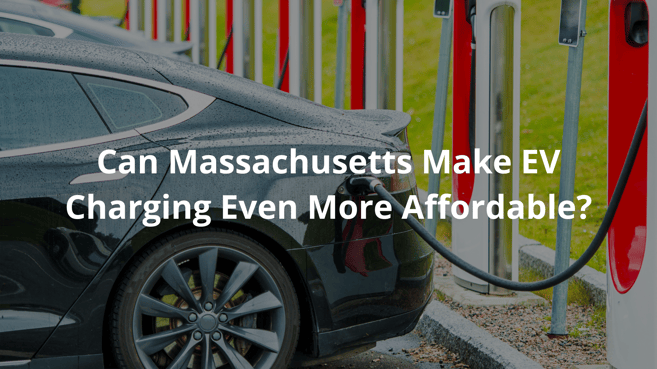Charge Your Electric Car Off-Peak in Massachusetts & Save
When you charge your electric car matters. Charging when overall demand for electricity is low reduces costs and...
 We’re big advocates for incentivizing electric vehicle (EV) drivers to charge their cars off-peak by offering them a lower retail price per kilowatt-hour (kWh). “Off-peak” periods refer to times when demand for electricity is low. At these times, wholesale electricity prices and emissions per unit of energy are lower as well. Shifting EV charging demand by setting a price signal — sometimes called a “time-varying rate” (TVR) or “time-of-use rate” (TOU) — is a win for everyone: EV drivers, non-EV drivers, the environment, and our electric grid. Right now, the Massachusetts Department of Public Utilities (DPU) is considering whether and how to move forward on this issue — and we wanted to give you an update on progress made so far. (Fair warning: if ever there was a blogpost for the policy wonks, this is it!)
We’re big advocates for incentivizing electric vehicle (EV) drivers to charge their cars off-peak by offering them a lower retail price per kilowatt-hour (kWh). “Off-peak” periods refer to times when demand for electricity is low. At these times, wholesale electricity prices and emissions per unit of energy are lower as well. Shifting EV charging demand by setting a price signal — sometimes called a “time-varying rate” (TVR) or “time-of-use rate” (TOU) — is a win for everyone: EV drivers, non-EV drivers, the environment, and our electric grid. Right now, the Massachusetts Department of Public Utilities (DPU) is considering whether and how to move forward on this issue — and we wanted to give you an update on progress made so far. (Fair warning: if ever there was a blogpost for the policy wonks, this is it!)
“TVR” refers to a retail rate structure in which the cost of a kWh of electricity depends on the time it is used by the consumer. Typically, electricity prices are lower at night, when demand is low, and higher during the day, when demand is higher. The lower prices at night are intended to convince consumers to shift some of their electricity consumption to times when the grid is less constrained. EV charging is a particularly easily-shifted load and thus a prime candidate for TVR, and “smart charging” in this way is a great win-win-win. You can learn more about the benefits of TVR in this blogpost we wrote, or by watching our Executive Director on the Energy Nerd Show.
TVR make sense to reduce emissions, costs, and better manage our electric grid, but they are also an important tool in the toolbox for incentivizing EV adoption. EVs already cost less to fuel and maintain than gas-powered cars, but why not price charging in a way that more accurately reflects the costs to the system? Especially while we wait for lithium-ion battery costs to continue falling (bringing the up-front costs of EVs down with them), TVR can further lower the operational costs of driving an EV and thereby accelerate the transition to this cleaner technology.
In July 2020, the DPU announced the opening of grid modernization phase II. (This follows on the 2018 grid modernization order, which you can learn more about here.) You can learn more about the history of these proceedings in the phase II opening document itself, but basically, the DPU has opened this new proceeding to answer one central question: does it make sense to roll out advanced metering functionality to enable smart charging to EV drivers in Massachusetts? And if yes, how?
The DPU has accepted two rounds of public comment since it released its initial opening document, and we are now in the midst of a four-session series of technical sessions, which will end on December 4, 2020.
Green Energy Consumers Alliance submitted comments in both the initial round of comments and the reply session. Basically, our key points amounted to:
You can read our full comments here.
Massachusetts is way behind on its transportation emissions goals. We set a goal for 300,000 EVs in the Commonwealth by 2025 when we signed onto the Zero Emission Vehicle Program; right now, with just four years left to go, we’re not even one tenth of the way there. The Commission on the Future of Transportation recommended setting a goal that by 2040, all new cars sold in Massachusetts be zero-emission; right now, we’re barely at 1%. We’ve got a lot of work to do.
Massachusetts does have its recently expanded MOR-EV state rebate program and is leading the charge on the Transportation & Climate Initiative, but these efforts are not enough to accelerate the adoption of EVs. If we can add another incentive to the stack — and one that doesn’t require subsidy and makes better use of existing infrastructure and benefits all residents, even those who don’t drive electric— why wouldn’t we?
When you charge your electric car matters. Charging when overall demand for electricity is low reduces costs and...
It’s imperative that we all switch from internal combustion engines to electric cars for several compelling...
Comments